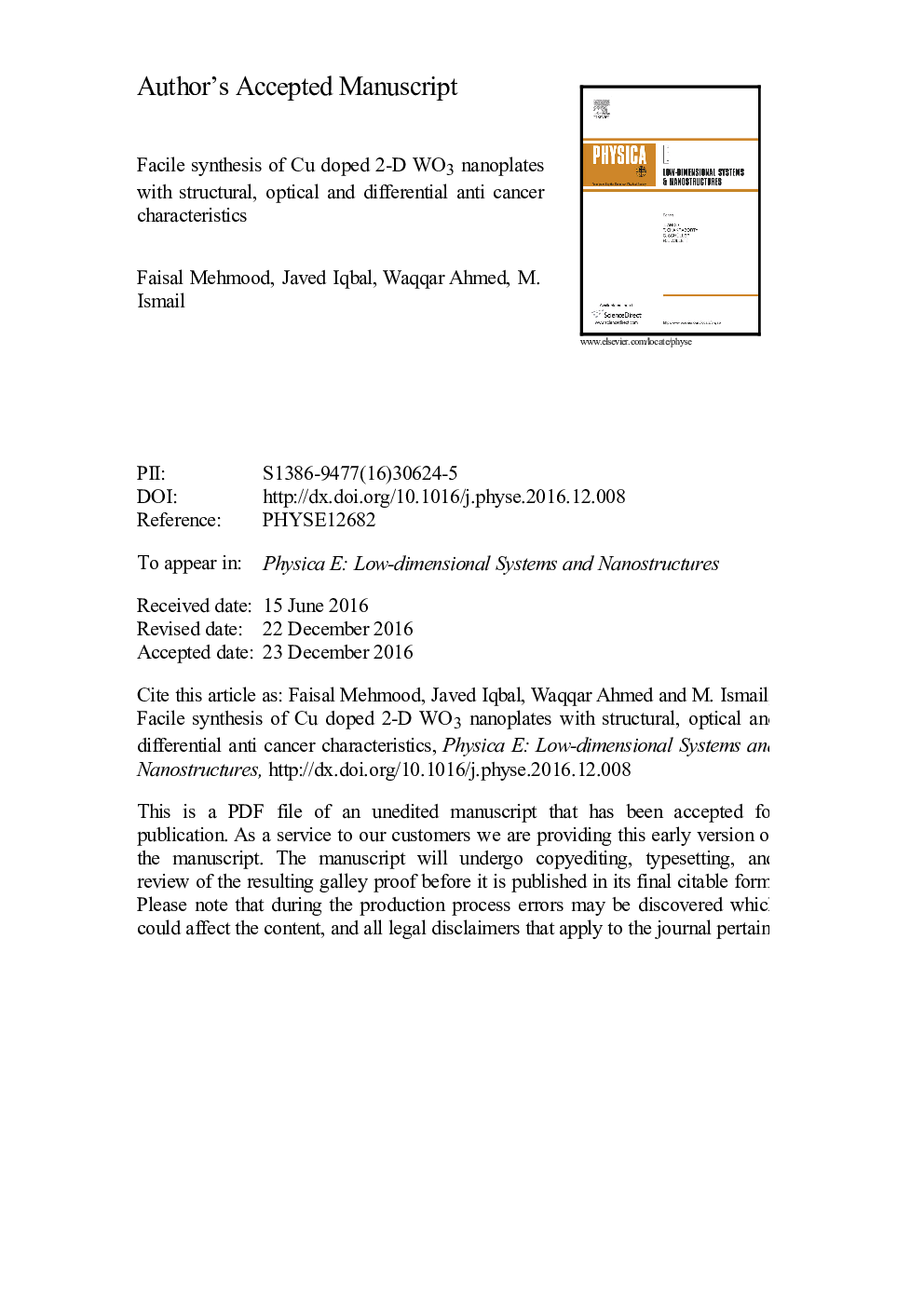| Article ID | Journal | Published Year | Pages | File Type |
|---|---|---|---|---|
| 5450217 | Physica E: Low-dimensional Systems and Nanostructures | 2017 | 20 Pages |
Abstract
Simple chemical co-precipitation method has been employed to synthesize two dimensional copper (Cu) doped tungsten oxide (WO3) nanoplates. A numbers of characterization techniques have been used to investigate their structural, optical and biocompatible anti cancer properties. The XRD results have confirmed the monoclinic crystal structure of WO3 nanoplates, and also successful doping of Cu ions into the WO3 crystal lattice. The presence of functional groups and chemical bonding have been verified through FTIR and Raman spectroscopy. The SEM images demonstrate that both undoped and Cu doped WO3 samples have squares plate like morphology. The EDX spectra confirm the presence of Cu, W and O ions. Diffuse reflectance spectroscopy (DRS) analysis has revealed a substantial red-shift in the absorption edge and a decrease in the band gap energy of nanoplates with Cu doping. Photoluminescence spectroscopy has been used to study the presence of defects like oxygen vacancies. Furthermore, the differential cytotoxic properties of Cu doped WO3 samples have been evaluated against human breast (MCF-7) and liver (Hep-2) cancer cells with ectocervical epithelial (HECE) healthy cells. The present findings confirm that the Cu doped WO3 nanoplates can be used as an efficient biocompatible anti cancer agent.
Keywords
Related Topics
Physical Sciences and Engineering
Materials Science
Electronic, Optical and Magnetic Materials
Authors
Faisal Mehmood, Javed Iqbal, Asma Gul, Waqqar Ahmed, M. Ismail,
